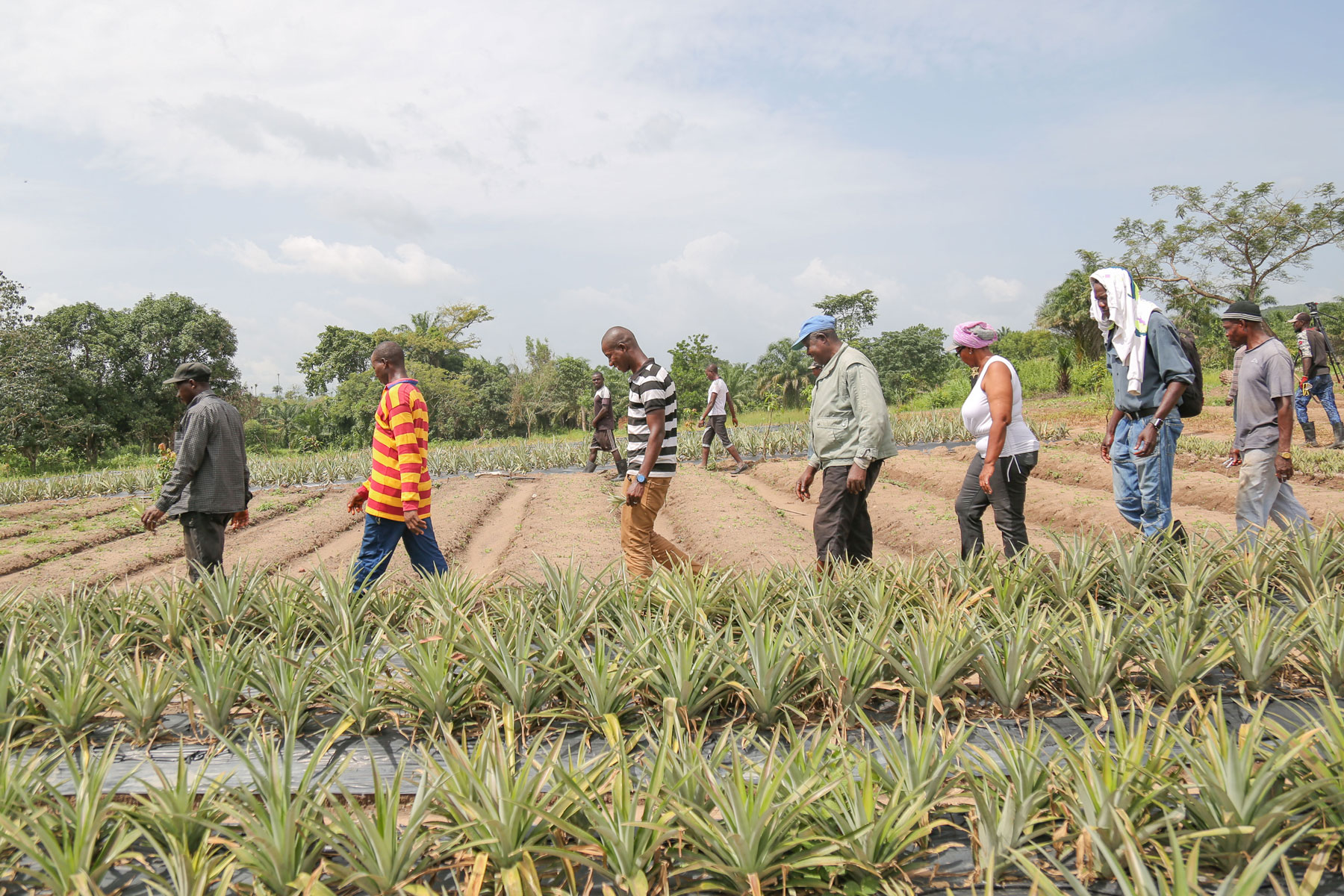
Volunteer Post
Rightly Valued and Welcomed Home: An Opportunity for People of Color in USAID’s Farmer-to-Farmer Program
Danika Lam
I have always enjoyed travel shows, and food shows, and especially travel shows about food. Watching Anthony Bourdain eating his way around the likes of Vietnam in No Reservations, I’d often think how I too would love to host a travel food show. But I am a Vietnamese–Filipino woman. Naturally, I look nothing like Anthony Bourdain. How could the food establishment ever let a face like mine speak about my own people’s cuisine to the American masses? my younger self would wonder. It’s in response to questions like these that I have felt the most conviction about entering spaces that were never made for me and claiming them for myself. I have perhaps found fertile ground to plant a flag for people of color in an unlikely place: an American government program.
Since 1985, the U.S. Agency for International Development’s (USAID) Farmer-to-Farmer Program has mobilized over 20,000 volunteers to help farmers and agribusiness professionals in developing countries improve their livelihoods and food security. American volunteers offer technical assistance along the entire agricultural value chain, from crop production to marketing and business development skills. Many of their beneficiaries are people of color, receiving training intended to help improve their livelihoods and food security. However, despite the program’s intentions to promote cultural exchange and represent the broad range of expertise that the U.S.’ diverse population can provide, less than 20% of volunteers have been people of color themselves.
Noting this gap in representation, USAID has partnered with Winrock International, a Farmer-to-Farmer implementer, to increase diversity and inclusion among its volunteers. More than a numbers game, the Farmer-to-Farmer DEI Initiative is focused on lessons learned, investigating what changes need to be made to attract and ensure the success of volunteers of color.
Perhaps unsurprisingly, in early attempts to bring on more people of color, Winrock recruiters have encountered a recurring question from would-be volunteers and institutional partners: “You haven’t sought our expertise up to this point, so why should we help you now?” And what a reasonable question, I thought, as a woman of color myself, starkly aware of how people of color have been excluded from government-funded programs, with farmers of color in particular having been denied support in times of need.
As a Winrock staff member searching for these answers, I have had the privilege of speaking with Winrock’s Volunteer Champions, a cohort of veteran volunteers committed to mentoring new volunteers of color. With their wisdom fresh in my mind, I encourage potential volunteers to think about the benefits our participation might bring to us, rather than the proverbial diversity checkbox.
For some, like Felicia Bell, a farmer from Brandon, Mississippi and Maurice Dawson, a professor at the Illinois Institute of Technology, volunteering with Farmer-to-Farmer is a way to connect with their ancestral lands and give back to their forebears. Dawson explains that many people of color in the United States have never had a chance to visit the places where their families come from. He encourages his students to take advantage of Farmer-to-Farmer as an expenses-paid opportunity to not only visit, but also give back to a place where the people look just like them. During his own volunteer assignments across West Africa, Dawson describes, “It was like being welcomed home.”
For others, Farmer-to-Farmer volunteer assignments are at once an opportunity for people of color to feel appreciated for what we bring to the table, and to claim a space for ourselves––to say, here too, we belong. Winrock’s former Director of Diversity, Equity, and Inclusion, Anjali Patel, explained the difference between diversity and inclusion as “being invited to the party” and “being asked to dance.” The opportunity to volunteer with Farmer-to-Farmer may at last represent professionals of color being asked to dance, and being deservedly thanked for the expertise, skill, passion, and grace with which they do so. In the words of Neelam Canto-Lugo, a professor at Yuba College, Farmer-to-Farmer volunteer assignments are a space “to feel included in the American fabric.”
It should go without saying that people of color have much to offer, but I know from experience that so often it can feel for people of color as though our skills are not wanted, that we are not valued. With Farmer-to-Farmer, the hosts who receive volunteers prove otherwise time and time again. Many of the Volunteer Champions note the gratitude with which their knowledge is greeted by those who participate in their training sessions. Having had a real impact on their lives, these participants show in their outright expressions of thanks and in how they implement what they have learned, how much they appreciate what volunteers have done. People of color here in the U.S. have so much to give, and it’s high time that USAID and its implementing partners make their recognition of this fact deeply felt, because Farmer-to-Farmer hosts––people of color around the world––already have.
